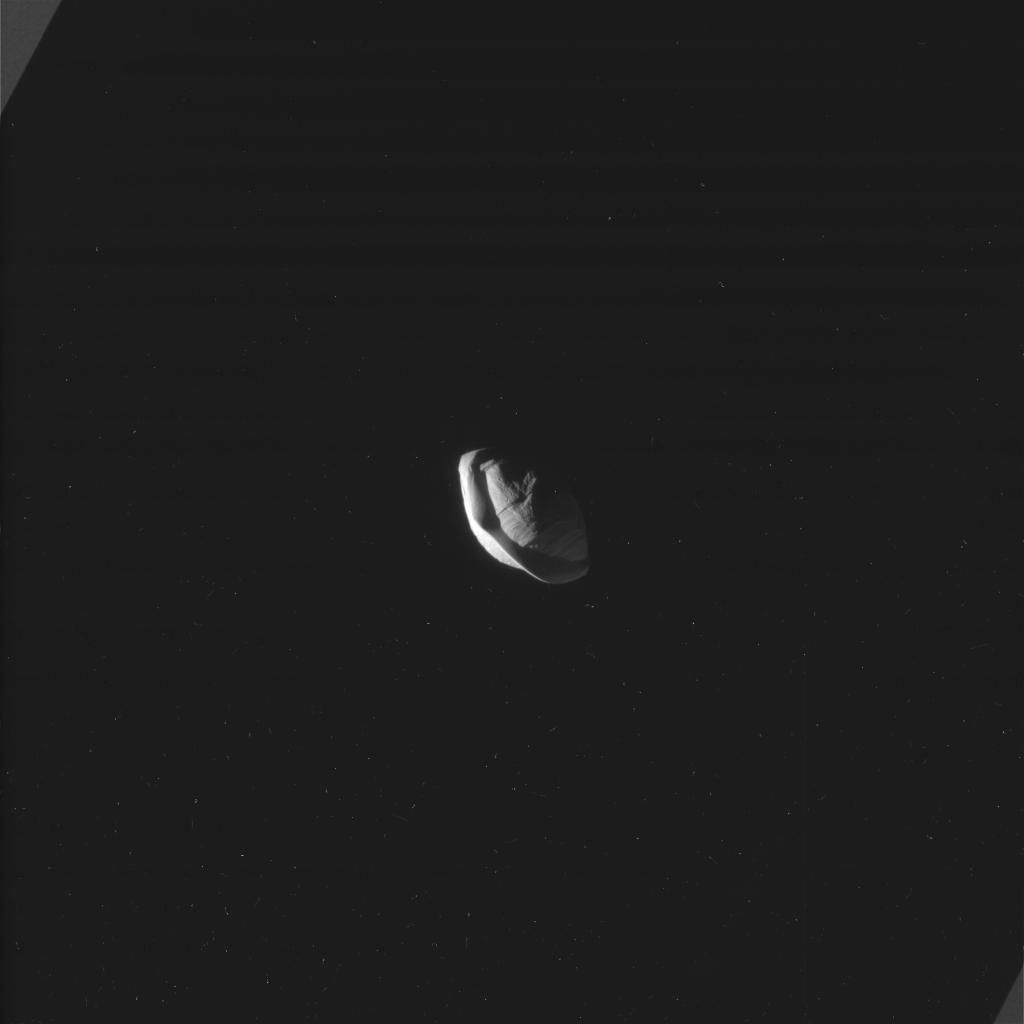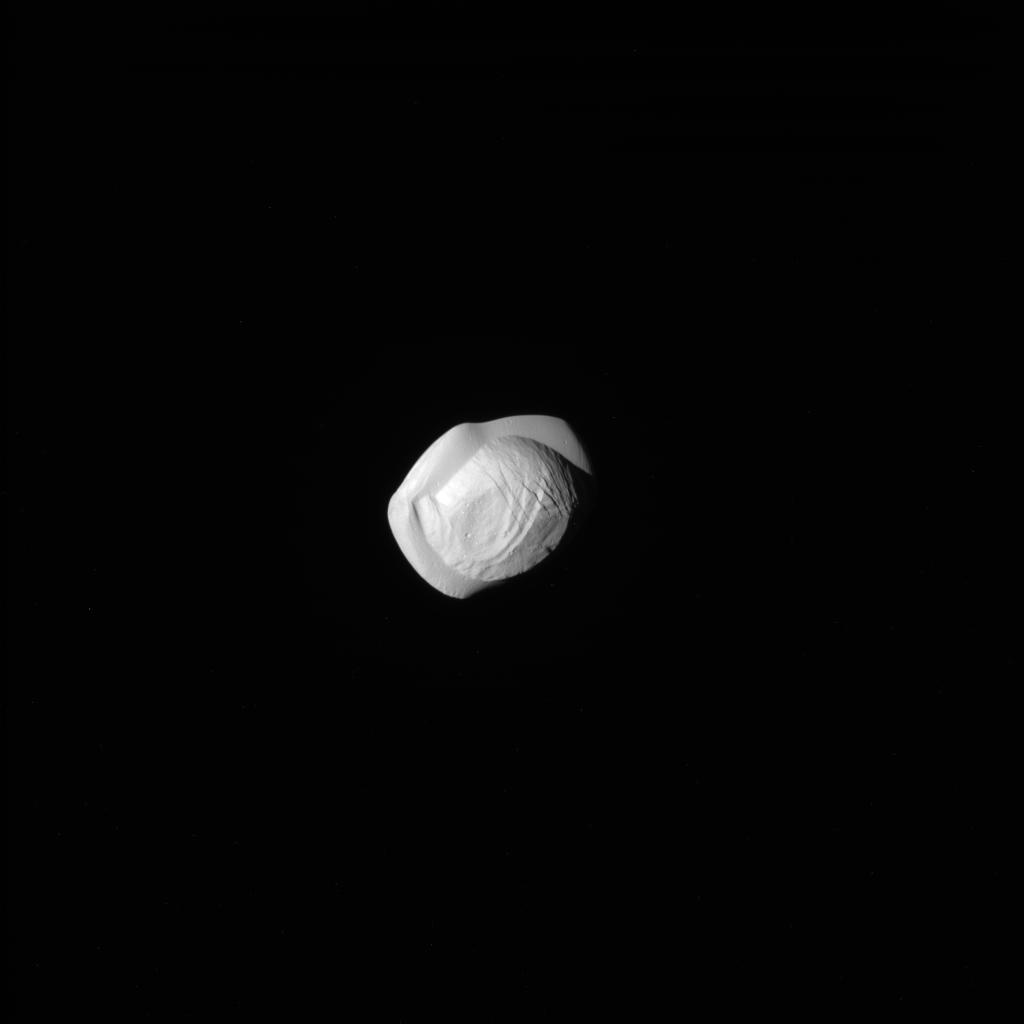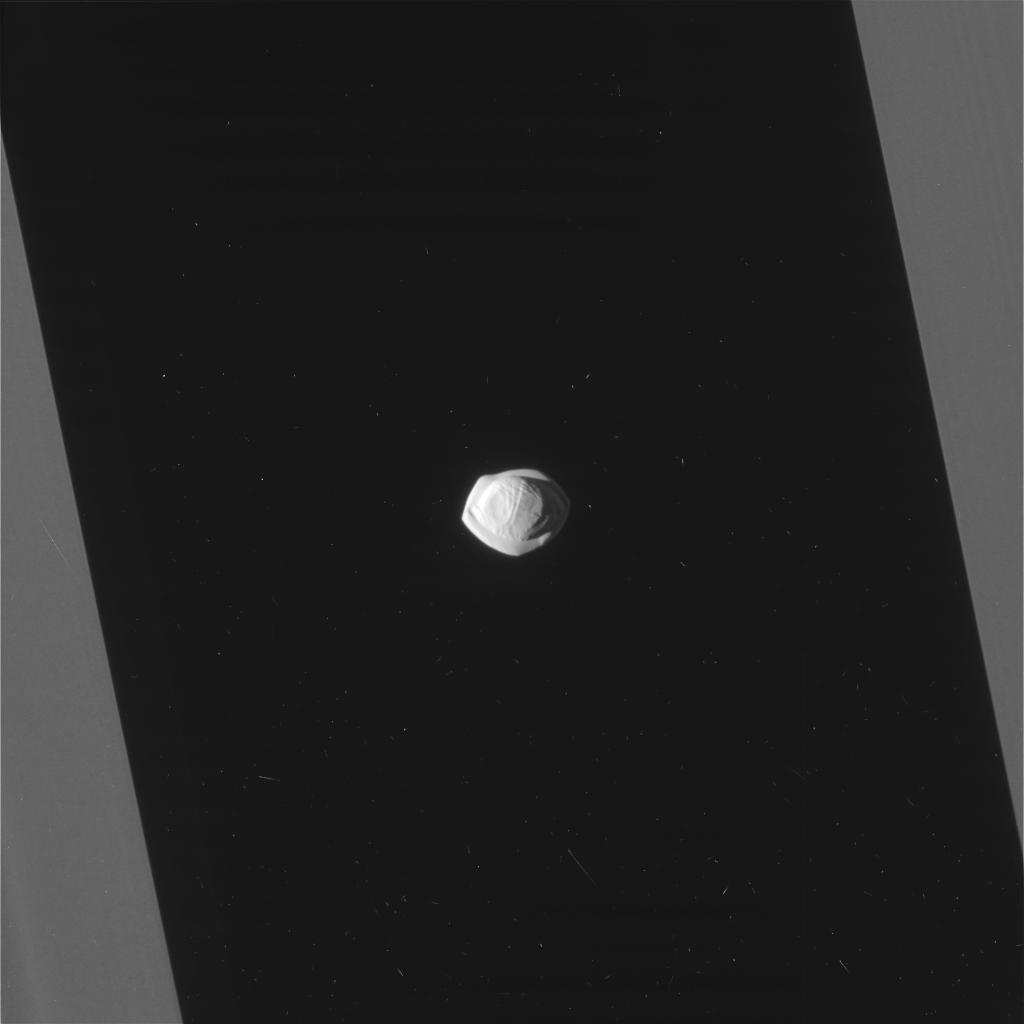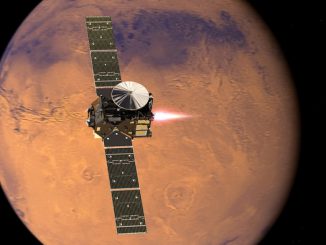
Saturn’s moon Pan, embedded in a gap in Saturn’s icy rings, has drawn comparisons to a walnut or ravioli in new images from NASA’s Cassini spacecraft.
In the final months of a 13-year mission at Saturn, Cassini captured the best-ever views of Pan on March 7, revealing new details about the moon’s shape and geology.

Most prominent is a frozen ridge along the 17-mile-wide (28-kilometer) object’s equator, likely formed as Pan scoops up bits of ice as it plows through Saturn’s rings.
Pan clears out material in the Encke Gap, a 200-mile-wide (325-kilometer) break in Saturn’s famous rings. The object is the second-innermost moon of Saturn and orbits around 83,000 miles (134,000 kilometers) from the planet, completing one lap in less than 14 hours.

Cassini passed around 15,000 miles (24,000 kilometers) from Pan last week as the spacecraft loops around Saturn in a series of “ring-grazing” orbits, offering the mission’s best views of the rings and the moons lurking nearby.
The probe will begin flying through the gap between the innermost ring and Saturn’s atmosphere in April, setting up for a destructive plunge into the planet in September to end the mission.
Email the author.
Follow Stephen Clark on Twitter: @StephenClark1.



